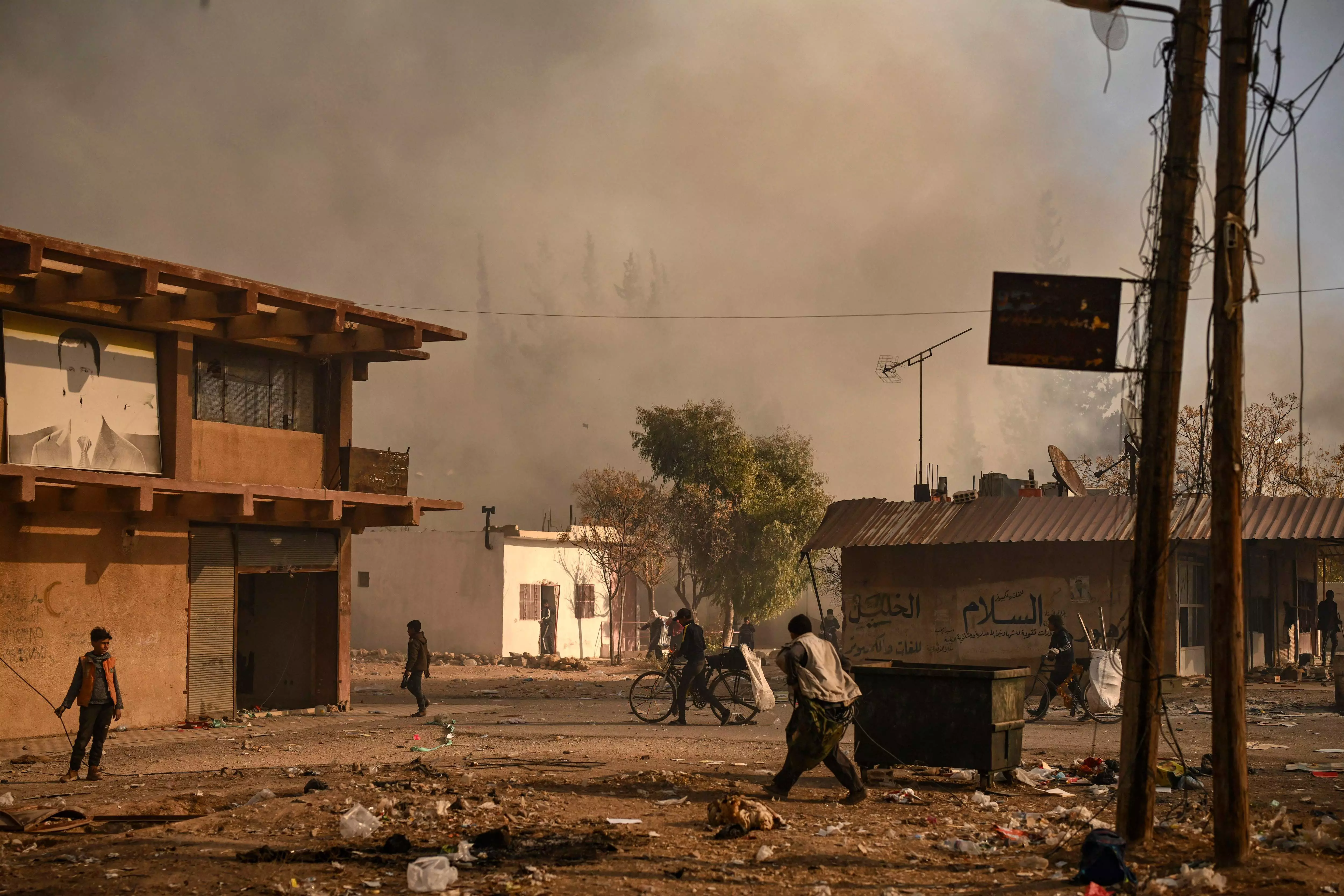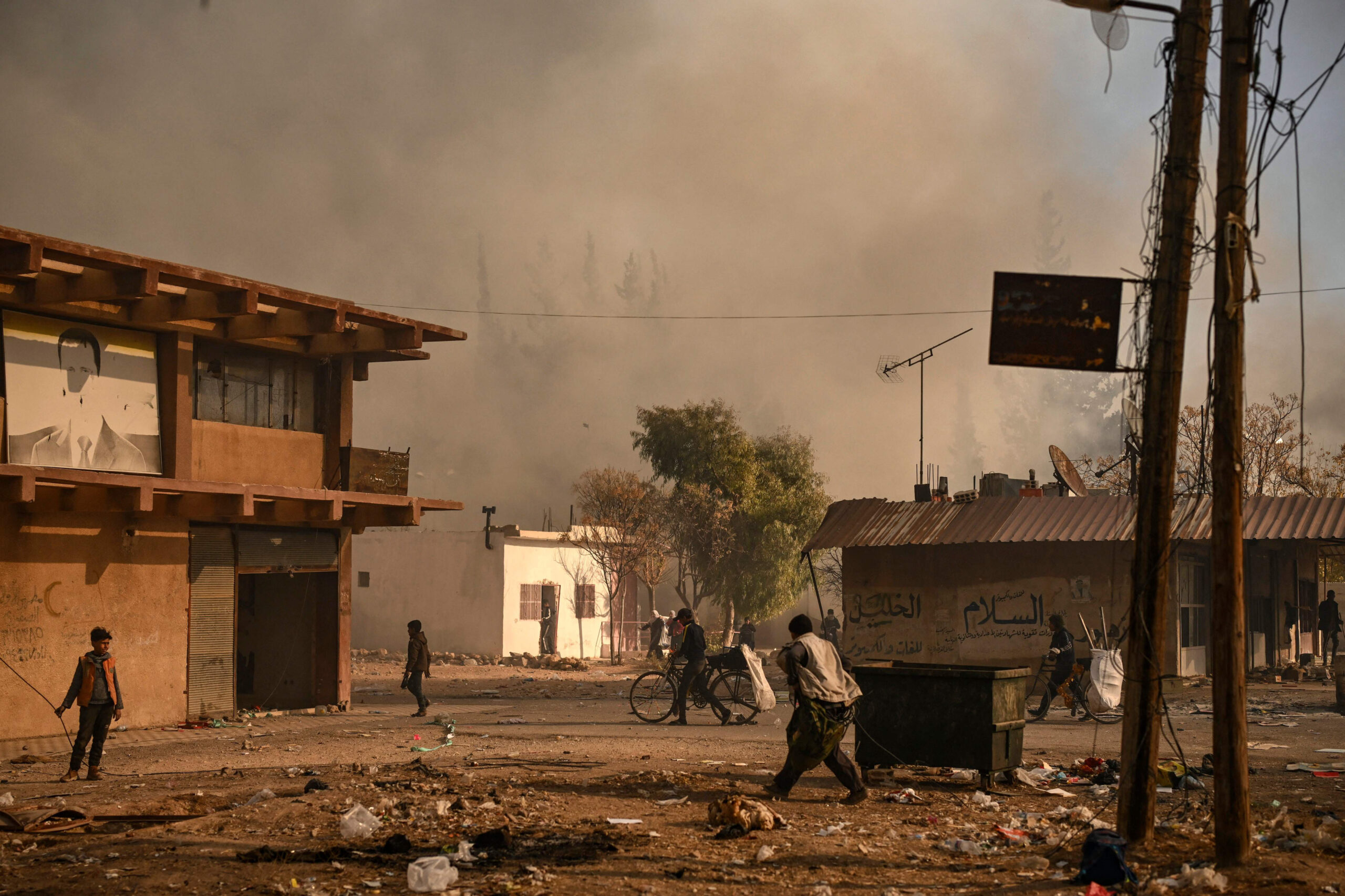
For a fairly long time, the world appeared to be fixated on the understanding that Iran and Syria acted as almost one nation in the pursuit of strategic security and foreign policy. As one of the main supporters of Bashar al-Assad in Syria, the ayatollahs of Iran secured considerable strategic advantage through the territory of the Levant under Syria’s control. Russian President Vladmir Putin’s support to Iran and Syria added to their comfort and the Russian military presence in Syria, despite the demands of the Ukrainian battlefield, only reflected how serious Mr Putin was about his foothold in the Middle East and the relationship with the Iran-Syria combine. The progressive hollowing out of the Bashir Assad administration and the corruption and lack of professionalism in the Syrian Army over the years perhaps never occurred to Russia due to the complete focus of attention on the Ukraine front. Even Iran was so totally obsessed with the successful run of strengthening Hezbollah that the Islamic Revolutionary Guard Corps (IRGC), Iran’s master of proxy war strategy, failed to detect that its hold over Syria through the Syrian Army had been largely diluted. Was the emaciation of the Syrian civil and military capability a deliberate non-military strategy followed by an external power is yet not known, but the advantage which now accrues is not to any one side but to several forces. Among those are the United States, Turkey, Israel and the radical Sunni elements that have vied for space in the Levant. Except for the US and Israel, none of the others have a joint interest. The ones at the greatest disadvantage from the run of recent events are Iran and Russia. The Jerusalem Post wrote: “Iran’s loss is staggering. Assad’s fall toppled the crown jewel of the arc of resistance that Iran spent over 35 years constructing as a counter-balance to Israel and American influence in the region. The removal of this cornerstone has effectively dismantled the arc”. It is said that when a revolution occurs and takes the world by surprise, you should always be prepared for a counter-revolution. So, is there a possibility of a counter-revolution in the making? The factors at play and the strategic environment both do not indicate this and for several reasons this reading should be assumed correct. Hamas’ actions in Gaza triggered a chain of events which Iran misread as an opportunity. It activated its proxy strategy by ratcheting up the degree of engagement of Israel, but in the bargain, 15 months later, stands only to count its staggering losses. The entire leaderships of Hamas and Hezbollah were wiped out, and that of the IRGC itself dented. The complete supply chain for moving of military resources and wherewithal to the main proxy — Hezbollah — is now completely disrupted. The fall of Bashar Assad and the neutralisation of Syria’s Army is also a result of several factors, with the final nail being the chain reactions set after the Hamas attack of October 7, 2023. Clearly, Mr Putin did not accord high enough priority to the Middle East in the run of the ongoing two major wars in the world — Ukraine and Gaza-Lebanon. That ensured that the strategic advantage Russia gained by the support to Iran, Syria and Bashir Assad was never prioritised. However, Mr Putin, never prone to sentimentality, is attempting to regain lost ground. He first described the HTS as “terrorists”, but shortly thereafter the Russian foreign ministry was referring to HTS as the armed Syrian opposition; a clear overture to the new ruling authority in Syria, one of the reasons why he refused to meet Assad and only granted him asylum. For how long is this asylum too is anybody’s guess. This is the quasi-counter revolution in the making, if at all; the overturning of the US-Israel advantage gained as a result of the Syrian meltdown.
Clearly, Mr Putin can’t do much alone, the Russians do not have that kind of bandwidth about the Middle East. They need the services of Iran and perhaps some of its proxies. However, can HTS, which is a Sunni radical organisation, come to work with Iran for any strategic advantage. Provided that HTS is not a proxy of either the US or Turkey, there is always the possibility of it working in close cooperation with Iran. It should be remembered that Hezbollah is a Shia organisation in ideological affinity with Iran, but Hamas has no such connection. It is a Sunni Islamist organisation with roots in the Muslim Brotherhood. Hamas’ ideology is deeply rooted in Sunni Islamic principles, advocating for the establishment of an Islamic state in historical Palestine. However, Hamas has received support from Iran due to shared strategic interests, particularly in opposing Israel. This alliance is more pragmatic than ideological, as their theological differences remain significant. Iran has provided funding, weapons, and training to Hamas, especially during times of isolation from Sunni Arab states. Despite this cooperation, Hamas and Iran maintain distinct religious and ideological frameworks.
Two other issues bear significance in the aftermath of the Syrian implosion. The rule of the ayatollahs since 1979 has appeared unwavering but sporadic instances of resistance to the theological rule have often occurred. The people of Iran do not entirely support the ayatollahs. Failure on the strategic front spurs the buildup of resistance in the streets. That is what Iran will be concerned about because movements such as those contemplated here need a cause and a leadership. The cause may be there in plenty, it’s a dynamic leadership and even external support which could cause a threat to the status quo.
The United States under incoming President Donald Trump may exercise caution about external involvement but Iran remains an anathema and Mr Trump has a particular aversion to the ayatollahs. US strategic circles in consort with Israel and perhaps Saudi Arabia (only to a limited extent) could sense this as opportunity. On the other hand, Iran’s long-term strategy revolves around the creation of a strong Shia crescent from Syria to Yemen taking in the majority and minority Shia populations into its fold. Over the last few years this had developed exponentially. The sudden downturn of the rising tide may spur Iran towards greater energisation of its efforts for achieving the crescent. That is where the clash could once again occur, re-energising the sectarian divide within Islam, with the world riding atop and once again deeply affected by that re-emergence.
